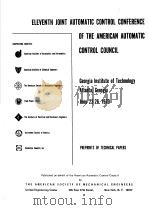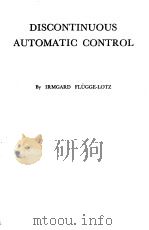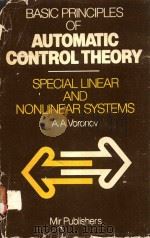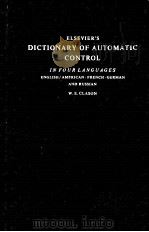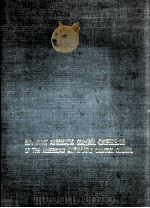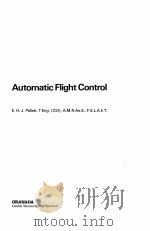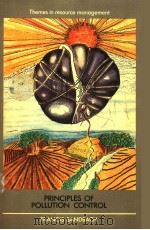《PRINCIPLES OF AUTOMATIC CONTROL》
| 作者 | MARTIN HEALEY 编者 |
|---|---|
| 出版 | HODDER AND STOUGHTON |
| 参考页数 | 352 |
| 出版时间 | 没有确切时间的资料 目录预览 |
| ISBN号 | 0340176717 — 求助条款 |
| PDF编号 | 811534148(仅供预览,未存储实际文件) |
| 求助格式 | 扫描PDF(若分多册发行,每次仅能受理1册) |
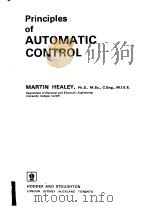
Preface7
Part One CLOSED LOOP CONTROL1
1.The Fundamentals and Applications of Closed Loop Contro1
1.1 A brief history of automatic control3
1.2 The principle of closed loop control4
1.3 Modes of automatic control8
1.4 Terminology10
1.5 Some examples of the application of closed loop control12
2.The Analytic Viewpoint14
2.1 The need for analysis14
2.2 Mathematical models14
2.3 The feedback amplifier16
2.4 System performance17
2.5 Methods of analysis19
Part Two ANALYSIS AND DESIGN OF LINEAR SYSTEMS23
3.Differential Equation Analysis23
3.1 Application to linear systems23
3.2 Notation used for velocity and position control systems24
3.3 First order systems24
3.4 The remote position control servomechanism29
3.5 General form and solution of the second order equation33
3.6 Errors38
3.7 The effect of additional time constants38
3.8 Summary40
4.Transfer Function Analysis42
4.1 Definition of transfer functions42
4.2 Validity of transfer functions43
4.3 Block diagrams43
4.4 Manipulation of transfer functions in closed loops44
4.5 Major and minor loops46
4.6 The open loop equivalent of a closed loop47
4.7 Direct feedback equivalent of a general system47
4.8 Application of transfer function analysis to the example of a position control servomechanism48
4.9 Systems with multiple inputs51
4.10 Systems with multiple inputs and outputs52
4.11 The general form ofa transfer function54
4.12 Signal flow diagrams or graphs57
4.13 Summary63
5.Frequency Response Analysis64
5.1 Frequency response functions64
5.2 Graphical representation of G(jω)67
5.3 Somefeatures of G(jω)69
5.4 Minimum and non-minimum phase systems72
5.5 Logarithmic plotting74
5.6 Asymptotic approximation on Bode diagrams77
5.7 Use of asymptotic approximation to construct Bode dia-grams83
5.8 Use of measured frequency response to find G(jω)85
5.9 Summary87
6.Stability Analysis88
6.1 Stable and unstable systems88
6.2 Stability analysis by pole-zero location89
6.3 The Hurwitz-Routh stability criterion92
6.4 Rootloci94
6.5 The Nyquist stability criterion102
6.6 Bode's theorems109
6.7 Methods of determining the closed loop from the open loop frequency response function111
6.8 Summary117
7.Design Procedure and Specifications118
7.1 Introduction to design118
7.2 Specifications118
7.3 Sensitivity functions127
7.4 Design procedure129
8.Compensating Techniques131
8.1 Methods of compensation131
8.2 The uncompensated proportional error system132
8.3 Proportional error system with derivative of output feedback134
8.4 Series compensation135
8.5 Parallel compensation149
8.6 Input compensation154
8.7 Compensation for two inputs155
8.8 Design techniques using the s-plane156
Part Three AN INTRODUCTION TO SOME FURTHER TECHNIQUES167
9.Nonlinear Systems167
9.1 Introduction167
9.2 The common types of nonlinearities168
9.3 Some effects of nonlinearities in closed loop control systems170
9.4 Describing functions171
9.5 Stability analysis using describing functions179
9.6 Closed loop response of a nonlinear system184
9.7 Frequency dependent describing functions186
9.8 An introduction to phase-plane analysis186
10.The Application of Statistics to Closed Loop Control Systems194
10.1 The field of statistical application194
10.2 Some important statistical terms195
10.3 The weighting function and the convolution integral200
10.4 Error criteria202
10.5 Analysis in the time domain204
10.6 Analysis in the frequency domain210
10.7 Conclusions215
11.Digital Control Systems217
11.1 Sampled data systems217
11.2 Mathematical representation of the sampled signal219
11.3 Analysis of f(t)221
11.4 The Z transform224
11.5 Manipulation of transfer functions in sampled systems225
11.6 Stability analysis of sampled systems227
11.7 Direct digital control229
12.Multivariable Systems—State Variables and Matrices231
12.1 Introduction231
12.2 Matrix algebra232
12.3 State space analysis234
12.4 Solution of the state vector differential equation238
12.5 The transition matrix239
12.6 State variable diagrams241
12.7 Representation of input functions by state variables244
12.8 Transformation of the state vector246
12.9 Observability and controllability247
12.10 Transfer function matrices249
12.11 State variable equations for digital systems249
12.12 Conclusions251
Part Four PRACTICAL ASPECTS255
13.M?thods of Mea?ring,Computing and Simulating Systems255
13.1 Measurement of transfer functions255
13.2 Computation andsimulation261
14.Syst? Compone?ts265
14.1 General considerations265
14.2 Comparison of d.c.,a.c.and hydraulic servomechan-isms266
14.3 Servomotors and drivcs267
14.4 Referred inertia and friction268
14.5 Gearing269
14.6 Motor rating270
14.7 Structural components274
14.8 Coarse and fine systems275
14.9 Assisted braking277
14.10 Transducers278
14.11 Synchros and resolvers279
15. D.C.Servomechanisms283
15.1 Introduction283
15.2 D.C.servomotors283
15.3 Field control284
15.4 Armature control285
15.5 Power amplifiers285
15.6 Other forms of continuous control290
15.7 Relay servomechanisms293
15.8 Transfer functions of continuous d.c.motor systems295
15.9 Motor toroue-speed characteristics298
15.10 D.C.tachometers299
16.A.C.Servomechanisms300
16.1 Introduction300
16.2 Modulators and demodulators302
16.3 A.C.servomotors302
16.4 Modulator-demodulator systems304
16.5 All-a.c.systems304
16.6 A.C.tachometers306
16.7 Thyristor speed control of a.c.motors307
17.Hydraulic Servomechanisms308
17.1 Introduction308
17.2 Pumps and motors308
17.3 Methods of control309
17.4 Flow control valves312
17.5 System transfer functions317
17.6 Oil323
《PRINCIPLES OF AUTOMATIC CONTROL》由于是年代较久的资料都绝版了,几乎不可能购买到实物。如果大家为了学习确实需要,可向博主求助其电子版PDF文件(由MARTIN HEALEY HODDER AND STOUGHTON 出版的版本) 。对合法合规的求助,我会当即受理并将下载地址发送给你。
高度相关资料
-
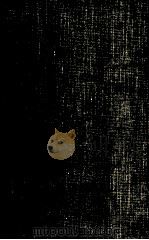
- AUTOMATIC CONTROL SYSTEMS
- 1977 Cornell University
-
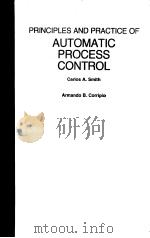
- PRINCIPLES AND PRACTICE OF AUTOMATIC PROCESS CONTROL
- 1985 JOHN WILEY & SONS
-
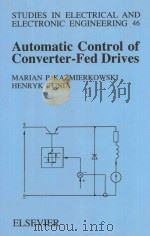
- AUTOMATIC CONTROL OF CONVERTER-FED DRIVES
- 1994 ELSEVIER PWN-POLISH SCIENTIFIC PUBLISHERS
-
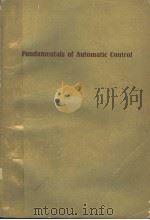
- FUNDAMENTALS OF AUTOMATIC CONTROL
- 1975 MCGRAW-HILL BOOK COMPANY
-
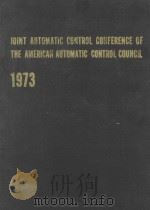
- JOINT AUTOMATIC CONTROL CONFERENCE OF THE AMERICAN AUTOMATIC CONTROL COUNCIL 1973
- 1973 THE INSTITUTE OF ELECTRICAL AND ELECTRONICS ENGINEERS
提示:百度云已更名为百度网盘(百度盘),天翼云盘、微盘下载地址……暂未提供。➥ PDF文字可复制化或转WORD
